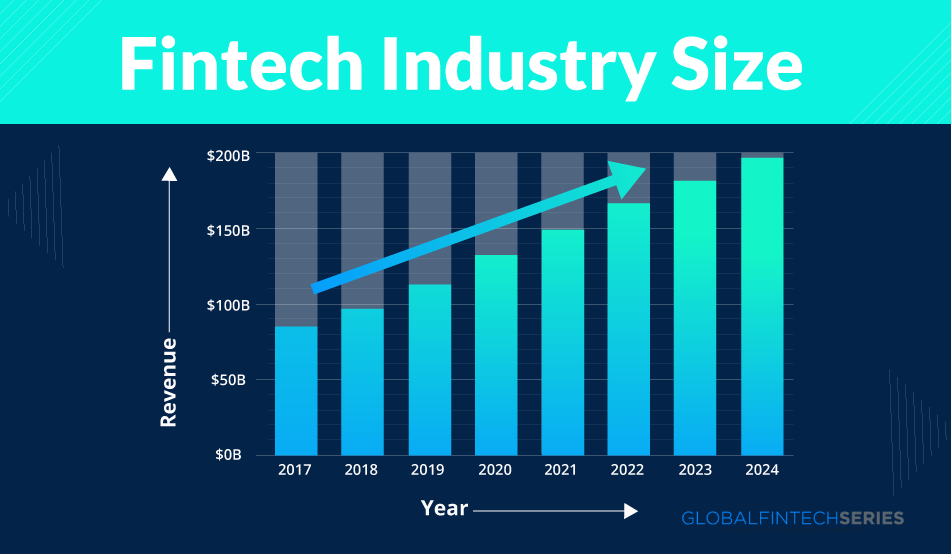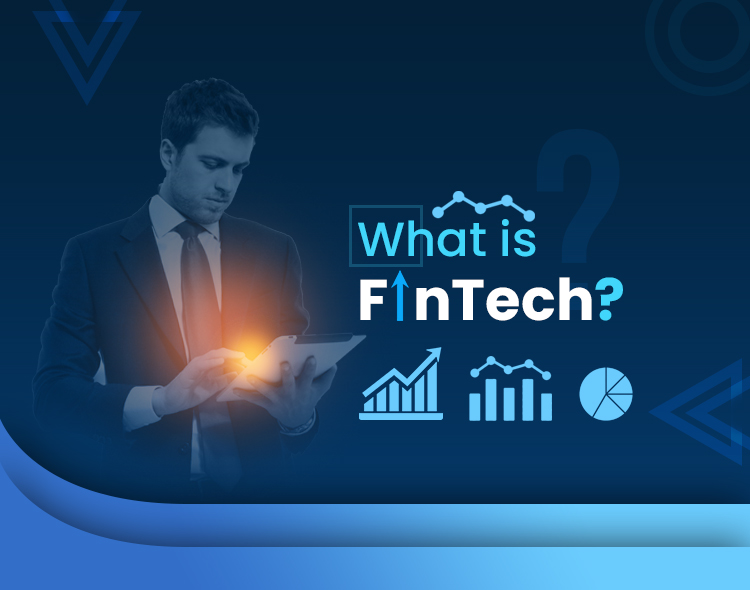Visa, Mastercard, PayPal, Stripe, Plaid, Chime, Ripple, NuBank, Paytm, and the list can go on…
In the current year, the fintech space is worth an astonishing figure of $179 billion. There are no less than reported 30,000 fintech startups.
Feeling like you have heard or read these somewhere? Well, these are the top-notch rated fintech firms that have a global presence.
So, come let us learn about “fintech”..what does it mean precisely and its genesis, and how did it become the buzzword of the decade?
What Precisely Is Fintech?
Fintech is now just behind the internet as one of the most deeply embraced consumer technologies. Fintech is the combination of the terms “finance” and “technology.” When combined, FinTech becomes a comprehensive term that describes any technology that provides financial services via software, such as smart banking services, mobile payment applications, and the most debated domain of Bitcoin.

Read: Trust in Banking Explained With 10 Live Examples
It is an extensive field that involves multiple technologies, but the core goals are to transform how individuals and organizations access finances and to compete with established financial services. This fast-rising Fintech sector has revolutionized the traditional trade, credit services, insurance, and risk management sectors.
Are You Familiar With The Real Inception Of Modern Fintech Stacks?
Nowadays, we associate fintech with cryptocurrencies and start-up banks, but its origins can be traced back to how folks conducted business in the late 19th century, including the advent of digital money and double-entry accounting.
Using telegraph and Morse code, the first transatlantic cable and Fedwire in the United States in 1886 enabled the first electronic fund transfer system. At that time, fintech meant the use of computer technology in the back office of banks or trade businesses.
As a result, the first ATM, the first digital stock exchange NASDAQ, and SWIFT emerged as part of the Fintech stack for finance.
In the 1990s, the first moves towards digital banking were made, and PayPal was established, predicting the new payment Fintech systems and IT integration that would develop as the globe got increasingly online. With the arrival of cloud computing and back office automation, Smartphones subsequently flooded the market and individuals began using the internet for mobile banking and other financial services. Later, in 2009, Bitcoin debuted, followed by other cryptocurrencies and NFTs leveraging blockchain technology.
Read: Unleashing The Power: How Tech Giants Harness Generative AI Chatbots
Fintech- A Game Changer For Multiple Industries
Fintech organizations, which include startups, technology corporations, and traditional financial institutions, leverage emerging technologies like big data, artificial intelligence, blockchain, and cloud computing to make financial services more accessible and effective.
Between 2014 and 2021, global Google searches for “fintech” increased 1,000-fold.
However, financial technology has moved to web 3.0 and metaverse and has proven increasingly unpredictable after the Internet and smartphone revolutions. Moving money, depositing a cheque with a smartphone, asking for credit without visiting a bank office, obtaining financing for a business, and preserving investments are some financial procedures that can be done without assistance.
As the world went digital, customers became as user-friendly as a cup of coffee while using digital tools for regular duties. This is shown in their financial management. After the credit card, financial technology introduced ATMs, electronic stock exchanges, bank mainframe computers, and internet stock exchanges to the mass market.
Read: How Can Banks Stay Competitive With A Secured IT Security Infrastructure?
Component Of Fintech With Examples-
- Smart assistants (siri, hey google)
- Digital Wallets and Payment gateways (PayPal, Venmo, Square, Apple Pay)
- Cryptocurrency and Blockchain DLT (virtual currency like Bitcoin)
- Robo-advisors (algorithms to automate investment advice-Betterment, Ellevest)
- P2P lending (Prosper, Upstart allow)
- SaaS Platforms (Software as a service)
- Crowdfunding platforms ( Kickstarter, GoFundMe)
- Personal Finance apps (Mint, Quicken)
- Payments (Venmo, Zelle)
- Stock trading apps (Robinhood, Acorns)
- BNPL (Buy now pay later)
- Contactless technology (Digital cash, tokens like NFT)
- Insurtech (Oscar Health, Credit Karma )
- Regtech (Anti-Money Laundering, KYC protocols)
Fintech Trends That Will Keep The Domain Ablaze
Digital banking systems are expected to grow 11.5% globally by 2026. Long periods of new products, product developments, strategies, and mechanical capacities in fintech have just begun. The promise of better customer experiences will drive most fintech growth.
Financial technology companies are at the forefront of this revolution because they are constantly testing and implementing cutting-edge technologies like generative AI, cloud-native services, blockchain, Web3, and immersive convergence to better serve their customers.
Read: Top Features Of Digital Payments App
[To share your insights with us, please write to pghosh@itechseries.com ]
